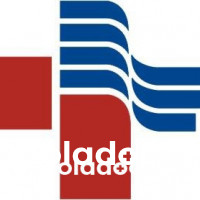Affecting millions of people worldwide, the word ‘rash’ is an all-encompassing term for the inflammation, discoloration, or abnormal appearance of the skin in one or more areas. According to the causative factors, here is a list of some common and lesser known types of rashes:
Table of Contents
1- Atopic Dermatitis (Eczema)
One of the more common types of rashes, Eczema is characterized by dry, red, itchy and thick patches of skin on the hands, feet, ankles, neck, upper body and limbs, rashes pertaining to this common skin condition are chronic; with symptoms worsening and disappearing periodically. In addition, other types of dermatitis, or eczema, include:
- Contact Dermatitis: A dry, scaly, non-itchy rash caused by contact with either a wide variety of irritants like cleaning products and chemicals (Irritant Contact Dermatitis), or itchy, red, and bumpy or blistered rashes resulting from exposure to allergens like latex and nickel (Allergic Contact Dermatitis). Rashes in both conditions tend to ooze.
- Seborrheic Dermatitis: Itchy, red, and scaly rashes affecting the scalp, forehead, brows, cheeks and outer ear in adults; and the scalp and diaper area in infants.
- Nummular Dermatitis: Oozing, coin-shaped plaques (raised skin) over extremely dry skin in winter.
- Cercarial Dermatitis (Swimmer’s Itch): An allergic reaction to a specific waterborne parasite, resulting in itchy rashes with or without burning sensations.
- Stasis Dermatitis: Oozing rashes on the chronically swollen lower legs of individuals with poor blood circulation.
Dermatitis can be treated using creams, lotions, medicated anti-itch creams, and avoiding irritants like detergents and harsh soaps, while lukewarm baths with oatmeal or baking soda can help reduce itching due to Cercarial Dermatitis.
However, those with Atopic Dermatitis should refrain from smallpox vaccines as they risk the development of a serious condition known as ‘Eczema Vaccinatum’; its best to discuss this with your Dermatologist (Skin Specialist).
2- Intertrigo
Common in warm, moist areas of the body with skin folds, such as underneath the breasts and arms, the groin, abdomen, and between toes, the friction between skin folds results in red, tender patches that may crack, bleed or ooze due to bacterial or fungal infections in extreme cases.
So while keeping these areas dry, wearing loose fitting clothing and applying powder can prevent and reduce the rashes, painful, oozing sores may require oral or topical medication.
3– Lichen Planus
This autoimmune, gradually developing condition causes inflammation along with itchy and flat-topped lesions, that are reddish-purplish in color, on the lower legs, back, neck, and insides of the wrists and ankles, while manifesting as lacy white lesions inside the mouth or on mucous membranes such as genitals.
Treatment usually comprises of applying aloe vera gel, pink salts, or cool compresses for mild cases, and medicinal therapies for serious cases, particularly those affecting the mucous membranes.
4- Psoriasis
A rapid accumulation of dead skin cells in certain areas of the skin may sometimes lead towards the formation of itchy, dry, scaly, and inflamed patches of thick and silvery skin.
Where symptoms of mild, localized (unspreading) cases are usually treated with lotions and creams, extreme cases may require topical medication and phototherapy for effective rash reduction as they are often concurrent with ‘Psoriatic Arthritis’.
5- Ringworm
In contrast with all of the above conditions, ringworm infections are contagious in case of contact with infected skin or contaminated objects. Characterized by itchy, red, scaly and slowly expanding rings with slightly raised edges as the infection progresses, the condition is commonly treated with prescription-grade antifungal medication. While ringworm of the skin is called ‘Tinea corporis’, ringworm infections of the foot and groin are called ‘Tinea pedis’, and ‘Tinea cruris’, respectively.
6- Rosacea
Facial redness and small, red or pus-filled bumps are characteristic symptoms of this chronic, incurable condition that is stimulated by any of the wide-ranged triggers that increase blood flow to the face: specific foods, temperature extremes, stress, sun exposure, skin products, etc.
7- Pityriasis Rosea (Christmas Tree Rash)
Lasting anywhere between 4 weeks to many months, this condition gets its name from the pink, itchy, scaly and fine rashes on either the chest, abdomen, or back, that slowly spread as individual patches to other parts of the body, usually aggregating on the back in one large patch resembling a Christmas tree’s outline. Medicated lotions may be applied for symptom relief of this otherwise self-resolving condition.
8- Shingles
One of the less common types of rashes is Shingles. Inactive strains of the Herpes zoster virus responsible for childhood infections of chickenpox retained by the body may reactivate in some individuals and result in clusters of small blisters in a certain area on one side of the body days after activation of the virus.
These clusters, upon breaking, expose ulcers that form dry crusts and fall off; the full cycle of presentation of symptoms to falling off of dry crusts takes approximately 4 weeks. As it is self-healing, antiviral medications are used to reduce the likelihood of post-infection pain, with vaccines available for those 60 and over.
While not contagious, it may cause chickenpox in previously uninfected individuals.
9- Scabies
Residing in the upper layers of the skin and commonly transferred via skin-to-skin contact with an infected individual, tiny mites cause allergic reactions manifesting as eczema-like rashes in the affected area 3 weeks after initial infection.
In case of persistence of any of these types of rashes, contact you doctor for alternative treatments. You can also book an appointment with a top Dermatologist in Peshawar, Karachi and Islamabad through oladoc.com, or call our helpline at 042-3890-0939 for assistance to find the RIGHT Doctor for your dermatological concerns.








